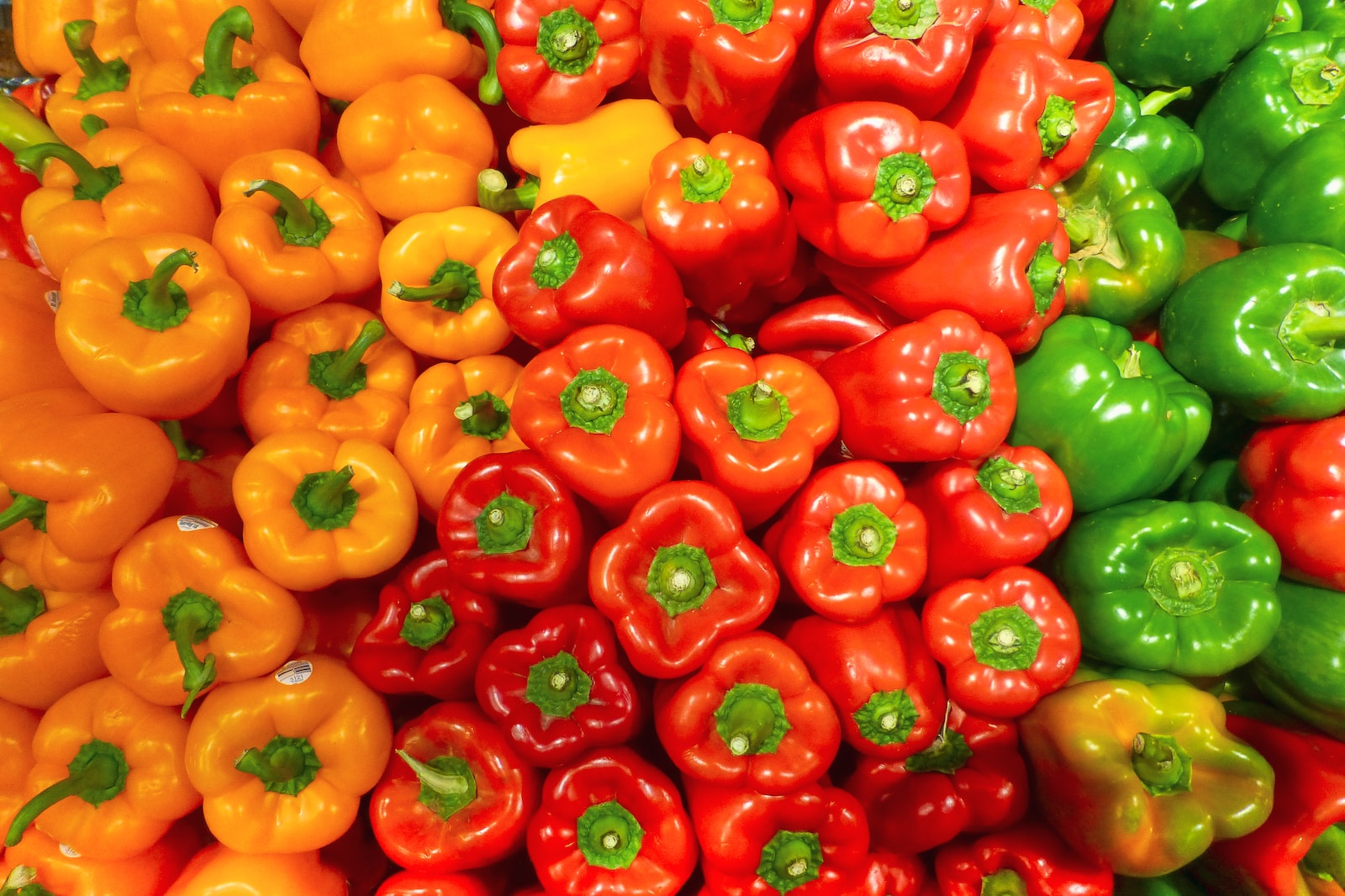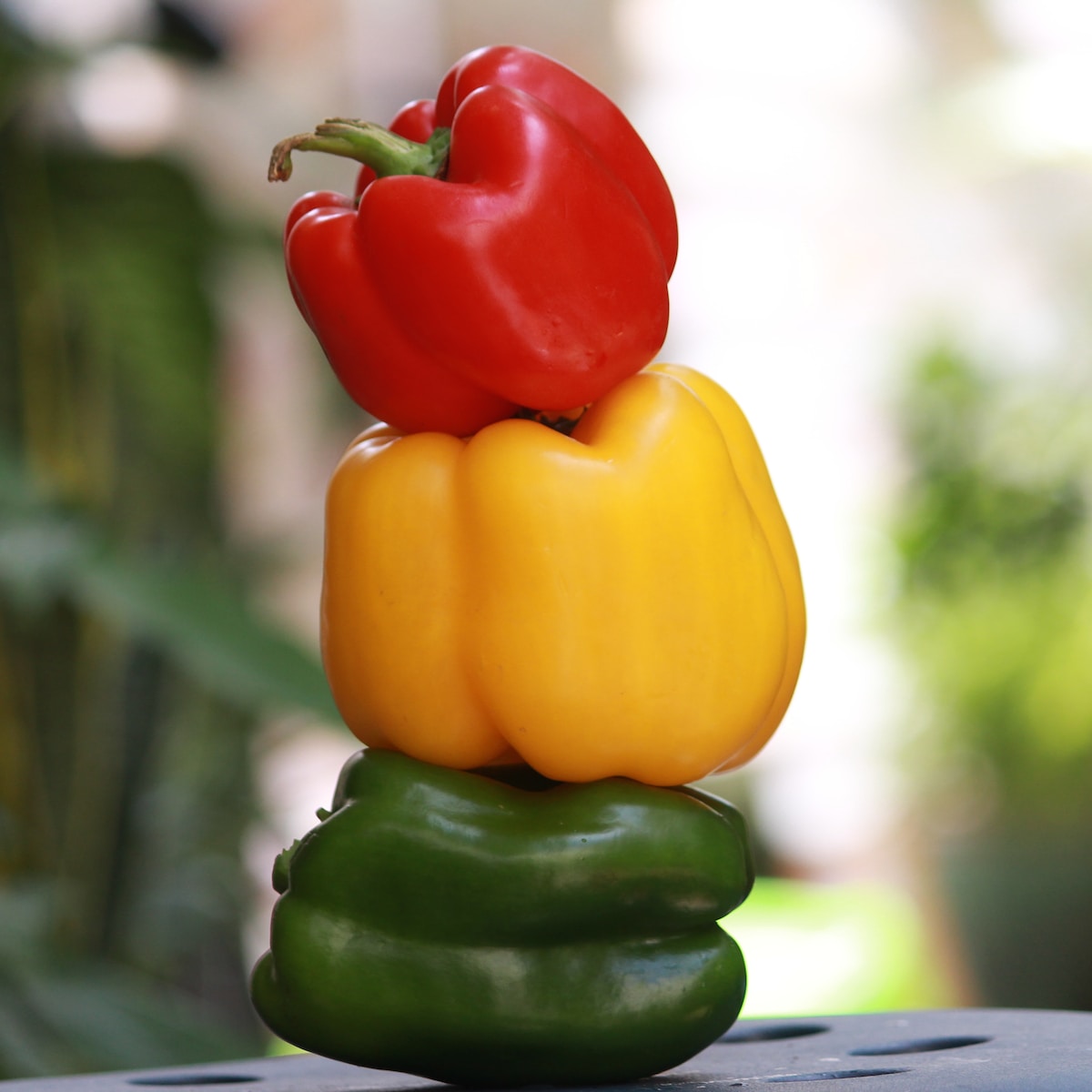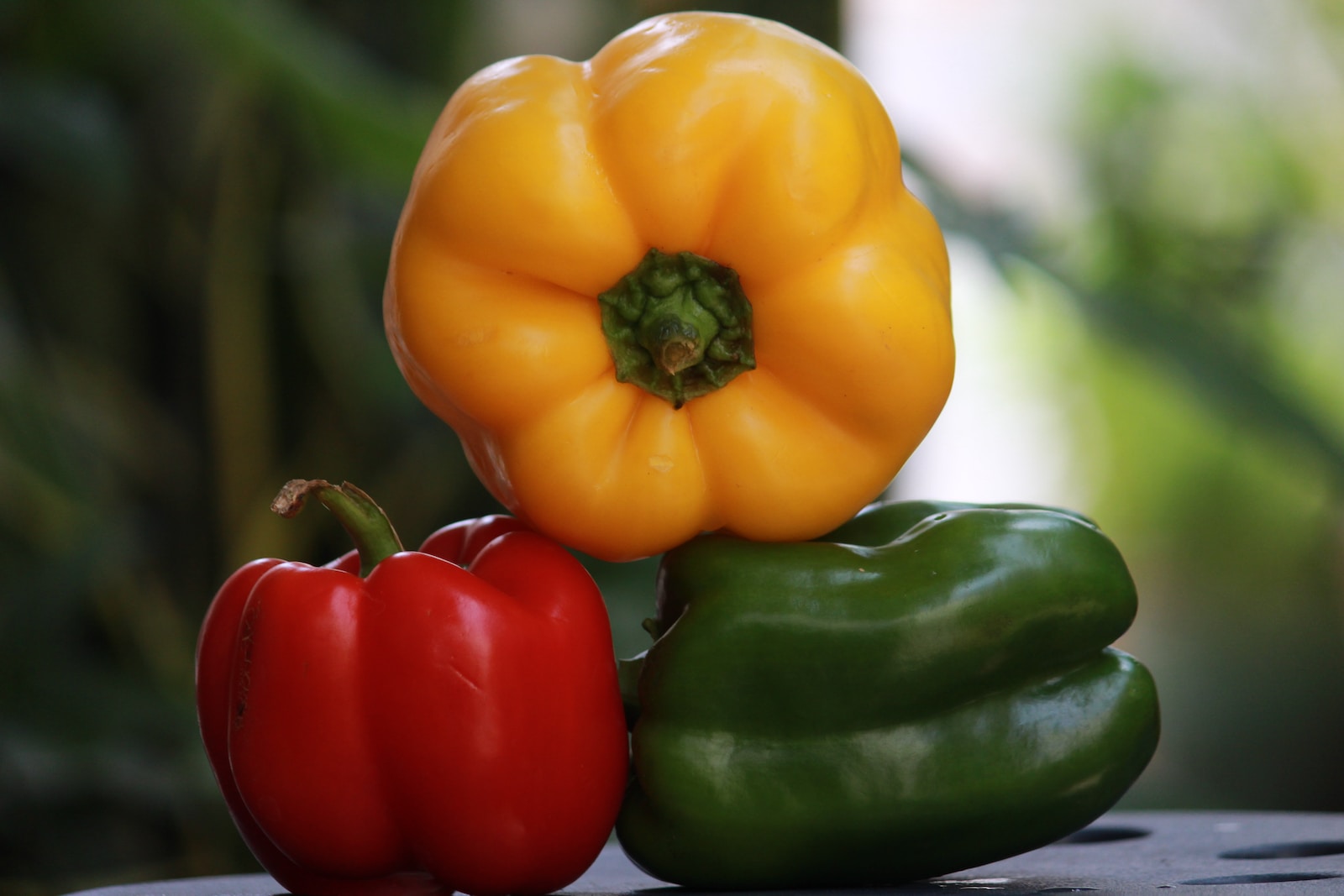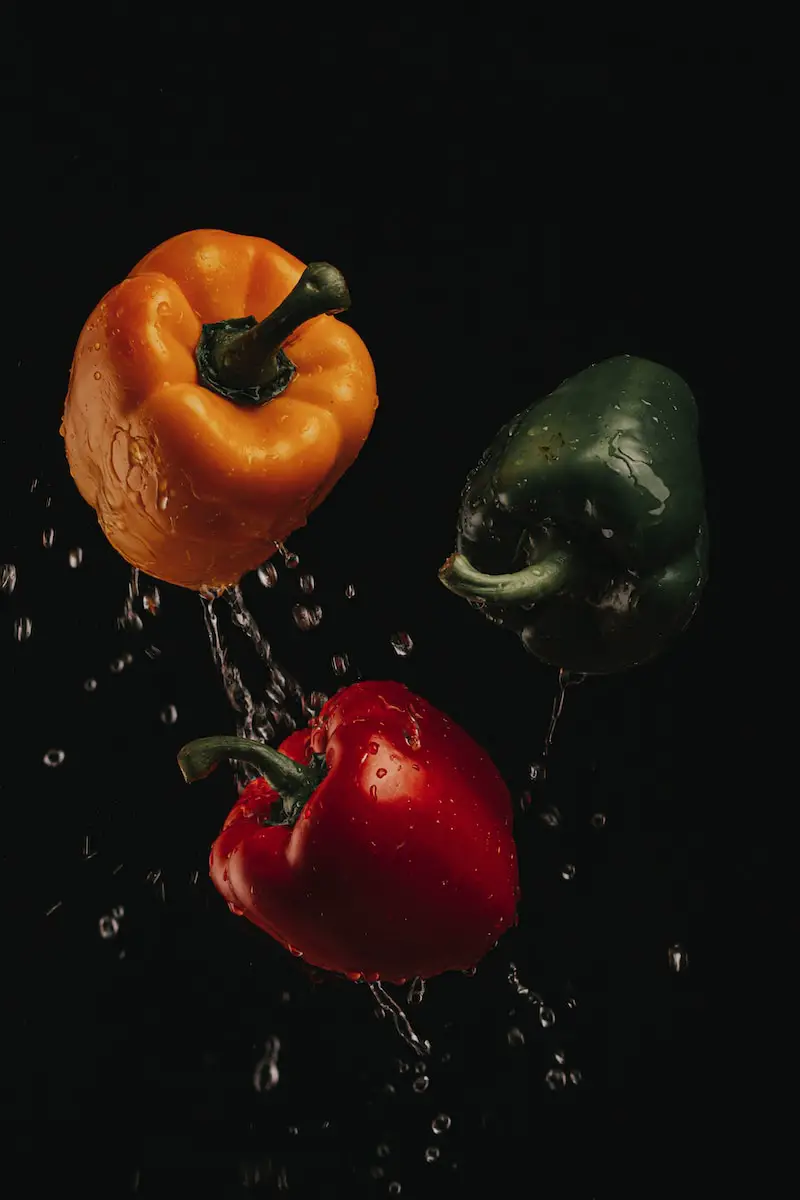
Bell peppers are a healthy and versatile vegetable that can be used in a variety of dishes. However, it’s important to know how to tell if a bell pepper is bad to avoid consuming spoiled produce. There are several signs to look out for when determining if a bell pepper is no longer fresh and safe to eat.
One way to tell if a bell pepper is bad is by its appearance. A fresh bell pepper should be firm, smooth, and shiny. If it appears wrinkled, shriveled, or has soft spots, it may be past its prime. Another indicator of spoilage is discoloration. If the pepper has turned brown, black, or has mold growing on it, it should be discarded.
In addition to appearance, the smell of a bell pepper can also be a clue to its freshness. A fresh bell pepper should have a mild, slightly sweet aroma. If it smells sour or unpleasant, it may be spoiled. By paying attention to these signs, individuals can ensure that they are consuming fresh and safe bell peppers.
Table of Contents
Identifying Fresh Bell Peppers

Fresh bell peppers are an essential ingredient in many dishes and can add a delicious crunch and flavor to any meal. Here are some tips to help you identify fresh bell peppers:
Appearance
Fresh bell peppers should have a smooth and shiny appearance with no wrinkling or blemishes on the skin. The peppers should be firm and have a good weight to them. They should not feel too light or too heavy for their size.
Color
Bell peppers come in a variety of colors, including green, yellow, and red. When selecting a bell pepper, it is important to choose one with a consistent color throughout. For example, a green bell pepper should be uniformly green without any yellow or brown spots. A red bell pepper should be bright red with no green or yellow areas.
Texture
Fresh bell peppers should have a crisp texture and be firm to the touch. The skin should be smooth and not wrinkled or soft. When you cut into the pepper, the flesh should be firm and not mushy.
Flavor
Fresh bell peppers should have a slightly sweet and slightly bitter flavor. The flavor should not be overpowering or too strong. Raw bell peppers are nutritious and can be eaten as a snack or added to salads or sandwiches.
By following these tips, you can easily identify fresh bell peppers and ensure that your dishes are flavorful and nutritious.
Signs of a Bad Bell Pepper

Bell peppers are a staple in many households, but it can be difficult to know when they have gone bad. Here are some signs to look out for to identify a bad bell pepper:
- Discoloration: A bad bell pepper may have areas that are discolored or have dark spots. This can indicate that the pepper is starting to rot.
- Soft Spots: If you notice any soft spots on the pepper, it is likely that it has gone bad. These spots may be mushy or slimy to the touch.
- Wrinkly Skin: A bell pepper with wrinkly skin may be an indicator that it is past its prime. The skin may also be dry or have a leathery texture.
- Moldy Spots: If you see any mold growing on the pepper, it is definitely time to throw it out. Mold can be dangerous to consume and may spread to other produce.
- Bad Smell: A bad bell pepper may emit a foul odor. If it smells sour or rotten, it is best to discard it.
- Cracking or Holes: If the pepper has any cracks or holes, it may be a sign that it is starting to spoil. Bacteria can enter through these openings and cause the pepper to go bad faster.
In summary, if you notice any of these signs, it is best to err on the side of caution and discard the bell pepper. It is always better to be safe than sorry when it comes to consuming produce that may be spoiled.
Storing Bell Peppers

Proper storage of bell peppers can help to extend their shelf life and prevent them from going bad too quickly.
When storing bell peppers, it is important to keep them in a cool, dry place. If you plan to store them in the refrigerator, place them in the crisper drawer, where the humidity can be adjusted to help keep them fresh.
To store bell peppers in the fridge, wrap them tightly in plastic wrap or store them in an airtight container to prevent moisture from getting in. This will help to keep them fresh for up to a week.
If you prefer to store bell peppers at room temperature, keep them in a cool, dry place away from direct sunlight. They can be stored on a shelf or countertop for up to three days.
It is important to note that storing bell peppers with other fruits and vegetables can cause them to ripen and spoil faster. Therefore, it is best to store them separately.
In summary, storing bell peppers properly can help to extend their shelf life and prevent them from going bad too quickly. Keep them in a cool, dry place, such as the crisper drawer of your refrigerator, or on a shelf or countertop away from direct sunlight. Store them separately from other fruits and vegetables and wrap them tightly in plastic wrap or store them in an airtight container to keep them fresh for up to a week.
Preserving Bell Peppers

Bell peppers are a versatile vegetable that can be used in a variety of dishes. However, they do have a limited shelf life, and it’s important to know how to properly preserve them to extend their freshness.
Freezing Bell Peppers
Freezing is a great way to preserve bell peppers for later use. The process is simple and can be done in a few easy steps:
- Wash and dry the bell peppers.
- Cut the peppers into desired sizes and remove the seeds and membranes.
- Blanch the peppers by boiling them for 2-3 minutes, then immediately transferring them to an ice bath to stop the cooking process.
- Drain the peppers and pat them dry with a paper towel.
- Place the peppers in a freezer-safe bag or container and label with the date.
Frozen bell peppers can last up to 6 months in the freezer. However, it’s important to note that freezing can cause the peppers to lose some of their texture and flavor.
Canning Bell Peppers
Canning is another option for preserving bell peppers. This method involves sealing the peppers in jars and processing them in a hot water bath to kill any bacteria and create a vacuum seal. The process can be time-consuming, but it allows the peppers to retain their texture and flavor for up to a year.
It’s important to follow a trusted canning recipe to ensure the peppers are properly preserved and safe to eat. Bell peppers can be canned whole, sliced, or diced, depending on personal preference.
Avoiding Freezer Burn
Freezer burn is a common issue when freezing bell peppers. It occurs when moisture evaporates from the peppers, causing them to become dry and discolored. To avoid freezer burn, make sure to remove as much air as possible from the freezer-safe bag or container before freezing.
Another tip is to use a vacuum sealer to remove all the air from the bag, which will help prevent freezer burn and extend the shelf life of the peppers.
Overall, freezing and canning are both great options for preserving bell peppers. Each method has its own advantages and disadvantages, so it’s important to choose the one that best fits your needs.
Cooking with Bell Peppers
Bell peppers are not only a colorful addition to any dish, but they are also incredibly versatile. They can be eaten raw, grilled, roasted, sautéed, or baked. They add a sweet and slightly tangy flavor to any dish and are a great source of vitamins A and C.
When cooking with bell peppers, it is important to cut them properly. First, wash the pepper and remove the stem. Cut the pepper in half and remove the seeds and white membrane. Then, slice the pepper into thin strips or chop it into small pieces.
Bell peppers can be used in a variety of recipes, from salads to stir-fries to pasta dishes. They pair well with other vegetables such as onions, mushrooms, and zucchini. They also add a pop of color to any dish.
One popular recipe that uses bell peppers is stuffed peppers. To make this dish, cut the top off the pepper and remove the seeds and membrane. Stuff the pepper with a mixture of cooked rice, ground beef, and tomato sauce. Bake in the oven until the pepper is tender and the filling is cooked through.
In summary, bell peppers are a versatile and healthy addition to any meal. They can be cooked in a variety of ways and are a great source of vitamins. When cutting and cooking with bell peppers, be sure to handle them properly to get the best flavor and texture.
Health Benefits of Bell Peppers
Bell peppers are not only delicious but also packed with essential nutrients that are beneficial for health. Here are some of the health benefits of bell peppers:
High in Vitamin C
Bell peppers are an excellent source of vitamin C, which is an essential nutrient for immune function and skin health. A single bell pepper can provide up to 169% of the recommended daily intake of vitamin C. This vitamin also acts as an antioxidant, protecting the body from damage caused by free radicals.
Rich in Vitamin A
Bell peppers are also rich in vitamin A, which is important for maintaining healthy vision, skin, and immune function. A single bell pepper can provide up to 93% of the recommended daily intake of vitamin A.
Nutritional Value
Bell peppers are low in calories and high in fiber, making them an excellent choice for weight management. They are also a good source of potassium, which is important for maintaining healthy blood pressure levels. Additionally, bell peppers contain small amounts of other essential nutrients such as iron, calcium, and vitamin E.
In conclusion, bell peppers are a nutritious and delicious addition to any diet. They are rich in essential vitamins and minerals, and their low calorie and high fiber content make them an excellent choice for weight management.
Additional Information
When it comes to bell peppers, it’s essential to know how to tell if they’re bad. Here are some additional pieces of information that can help you determine whether your bell pepper is still safe to eat.
The Ripening Process
Bell peppers, like most fruits and vegetables, continue to ripen after they’ve been picked. This process can change the pepper’s color, texture, and taste. If you prefer a sweeter pepper, look for one that has been allowed to ripen fully. However, if you want a bell pepper that’s still firm and crunchy, choose one that’s just starting to ripen.
Blossom End Rot
Blossom end rot is a disease that affects many fruits and vegetables, including bell peppers. It’s caused by a lack of calcium in the soil, which can lead to the bottom of the pepper turning black and mushy. If you notice this type of rot on your bell pepper, it’s best to discard it.
Drying Out
Bell peppers can dry out if they’re left in the refrigerator for too long or if they’re stored in a dry environment. If your bell pepper looks shriveled or has a wrinkled skin, it’s probably past its prime.
Hot Peppers
If you’re buying hot peppers, such as jalapeños or habaneros, it’s essential to handle them with care. These peppers can cause skin irritation and burning sensations, so be sure to wear gloves when handling them. Additionally, always wash your hands thoroughly after handling hot peppers.
FDA Guidelines
The FDA recommends that consumers purchase fresh produce that’s free from bruises, cuts, or other signs of damage. Additionally, it’s essential to wash all produce thoroughly before consuming it. If you’re unsure whether your bell pepper is still safe to eat, it’s best to err on the side of caution and discard it.